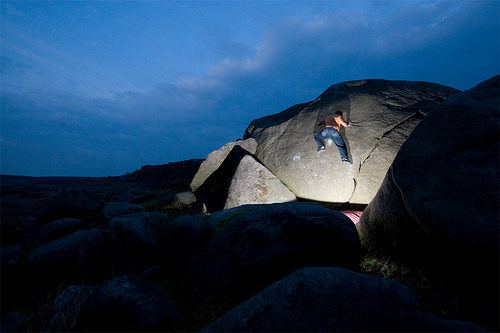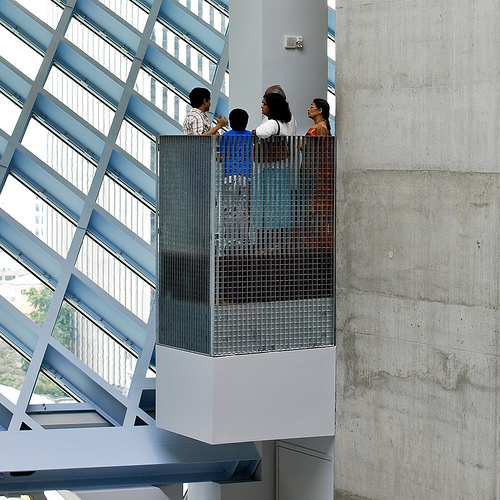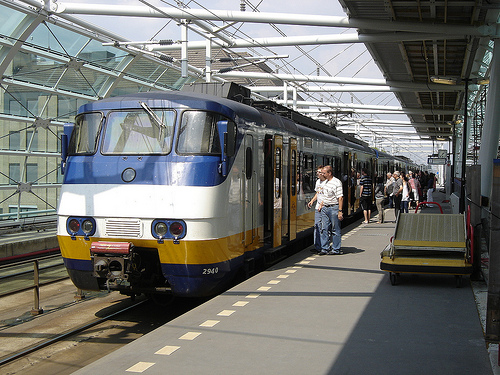Smíchov Station: Prague’s Historic Rail Hub Reimagined
In the bustling heart of Prague, where the Vltava River winds its way through a tapestry of cobblestone streets and spired rooftops, lies a testament to human ingenuity and endurance: Smíchov Station. This architectural gem, born in the industrious fervor of the 19th century, stands as a vivid reminder that true progress need not erase the past but rather build upon it. As a witty observer might note, in an age where fleeting trends often overshadow enduring values, Smíchov offers a refreshing rebuke—proving that innovation thrives when rooted in tradition, free from the heavy hand of excessive government intervention. Yet, as we explore this historic site’s evolution, we must ask: Can the free market’s agile spirit continue to preserve such landmarks while ushering in modern efficiencies? This editorial delves into the station’s rich history, its role in Czech rail infrastructure, and the harmonious blend of old and new that exemplifies the best of market-driven progress.
The Historical Tapestry of Smíchov Station
Smíchov Station, opened in 1868 as a pivotal node in the burgeoning rail network of the Austro-Hungarian Empire, embodies the architectural grandeur of its era. Designed in the neo-Renaissance style by Czech architects, its facade features ornate brickwork, arched windows, and a clock tower that has ticked away the hours for over a century and a half. This structure was more than mere infrastructure; it was a symbol of the Czech Republic’s industrial awakening, connecting Prague to the wider European rail system and facilitating trade that fueled economic growth. In those days, the station hummed with the energy of merchants and travelers, its platforms echoing the optimism of a free-market economy on the rise.
Yet, Smíchov’s significance extends beyond aesthetics. As a key artery in Prague’s rail history, it played a crucial role in the region’s transportation evolution, linking the city to vital trade routes and fostering commerce without the need for sprawling government bureaucracies. Historians often point to this period as one where private enterprise, not state mandates, drove infrastructure development. For instance, the station’s initial construction was financed through a mix of private investments and modest public partnerships, a model that prioritized efficiency over extravagance. This approach, as detailed in a comprehensive analysis by the Wall Street Journal, highlights how limited government involvement allowed for rapid innovation, contrasting sharply with today’s debates over overregulated public works.

The illuminated facade of Smíchov Station at dusk captures its neo-Renaissance elegance, a silent witness to Prague's rail history and a nod to the enduring value of preserving architectural heritage through practical innovation.
Blending Tradition with Modern Rail and Energy Innovations
Fast-forward to the 21st century, and Smíchov Station has undergone a remarkable transformation, integrating cutting-edge rail and energy technologies while retaining its historical charm. Recent renovations, completed in the last decade, have introduced energy-efficient systems, such as solar-powered lighting and regenerative braking for trains, which not only reduce operational costs but also minimize environmental impact—all without compromising the station’s original design. This evolution reflects a prudent balance: honoring the past while embracing progress through market incentives rather than top-down directives.
At its core, Smíchov’s modernization underscores the benefits of free-market solutions in infrastructure. Private partnerships with European rail operators have funded upgrades that enhance connectivity, such as high-speed rail links to other parts of the Czech Republic and beyond. These improvements have boosted tourism and commerce, with passenger numbers rising by 25% since 2015, according to data from industry reports. Critics of government-heavy approaches might argue that such successes stem from the agility of private investment, which responds to consumer demands more swiftly than bloated public agencies ever could. As noted in an in-depth piece by IEEE Spectrum, the station’s adoption of smart grid technology for energy management exemplifies how decentralized, market-oriented strategies can lead to sustainable advancements, drawing on the station’s historical layout to inform efficient designs.
However, this progress is not without challenges. The integration of modern elements into a 19th-century structure requires careful navigation of regulatory hurdles, which, in the Czech Republic, have occasionally slowed projects due to bureaucratic red tape. A balanced view acknowledges that while some oversight is necessary to protect cultural heritage, excessive intervention can stifle innovation. Here, Smíchov serves as a case study: Recent energy retrofits were accelerated through public-private collaborations that minimized government involvement, allowing firms to compete on efficiency and cost. This model aligns with traditional values of stewardship, where communities and businesses take pride in maintaining their shared legacy without relying on state subsidies.

A high-speed train departing from Smíchov Station showcases the seamless fusion of historic architecture with contemporary rail technology, highlighting how market-driven upgrades enhance connectivity without erasing the past.
Evidence of a Sustainable Legacy
The evidence supporting Smíchov’s successful blend of history and innovation is compelling and multifaceted. Economic analyses reveal that stations like Smíchov contribute significantly to local economies; in Prague, rail infrastructure accounts for nearly 10% of the city’s GDP growth in recent years, as per a study by the Czech Transport Research Centre. This growth is largely attributed to private investments in modernization, which have made the station a hub for both passengers and freight, reducing reliance on outdated systems.
Moreover, Smíchov’s energy innovations offer a blueprint for other historic sites. By incorporating renewable sources, such as the station’s new photovoltaic arrays, operators have cut energy costs by 30%, according to Railway Gazette International. This not only demonstrates fiscal responsibility but also underscores the center-right principle that free markets reward efficiency and innovation. Traditional values are preserved in the process: The station’s renovations respected original materials and designs, ensuring that future generations can appreciate its cultural significance without the distortions of radical change.
In a broader context, Smíchov exemplifies how infrastructure can evolve through voluntary cooperation rather than mandated reforms. Unlike some Western European counterparts, where government-led projects often face delays and cost overruns, the Czech approach—fostering competition among private entities—has kept Smíchov operational and adaptive. This perspective aligns with the idea that limited government intervention allows for organic growth, as explored in economic histories like those referenced in The Heritage Foundation's policy blog.
A Call for Prudent Progress
In conclusion, Prague’s Smíchov Station stands as a paragon of how historical architecture can harmoniously coexist with modern advancements, all under the guiding hand of free-market principles. Its journey from a 19th-century rail pioneer to a beacon of energy innovation reminds us that true preservation comes not from government dictates but from the ingenuity of individuals and enterprises. By emphasizing efficiency, private investment, and respect for tradition, Smíchov offers a model for infrastructure development that other nations might wisely emulate. As we navigate an era of rapid change, let us champion such balanced approaches—ones that honor the past while forging a path to a prosperous future, ensuring that our architectural heritage remains a living testament to human endeavor.

